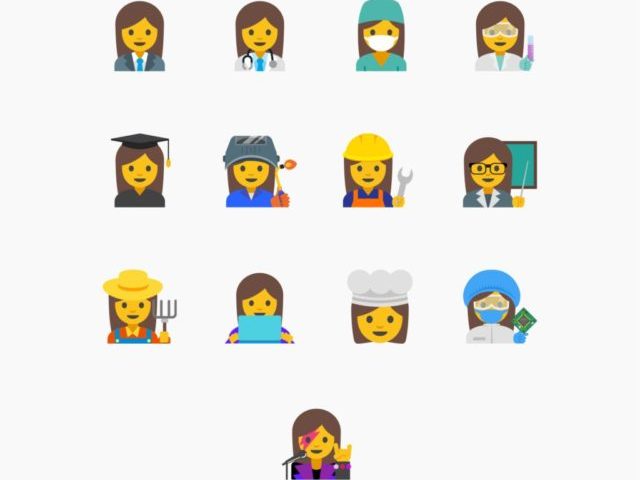In response to the New York Times op-ed “Emoji Feminism,” Google has proposed 13 new emoji designs “highlighting the diversity of women’s careers and empowering girls everywhere.”
“No matter where you look, women are gaining visibility and recognition as never before,” the proposal reads. “Isn’t it time that emoji also reflect the reality that women play a key role in every walk of life and in every profession?”
The creators are hopeful the new icons, chosen based on labor data and the growing interest in workplace gender equality, will “empower young women and better reflect the pivotal roles women play in the world.” The final designs depict women working in science and technology, healthcare, farming and manufacturing, education, food service, music, and business.
In the op-ed that sparked the emoji additions, author Amy Butcher complained about the lack of emojis available portraying the modern working woman.
Where, I wanted to know, was the fierce professional working her way to tenure? Where was the lawyer? The accountant? The surgeon? We are told we are the new generation of American women; no longer a minority, we are, in fact, the majority of breadwinners in American homes. And yet the best we can get is the flamenco [dancer].
The 13 designs, each with a male counterpart, have been submitted to the Unicode consortium for approval. Jeremy Burge, a member of the Unicode Consortium’s Emoji Subcommittee, is in favor of Google’s proposal, which he believes could be quickly implemented. “It’s pretty clear that female-oriented professions are under-represented in emoji,” he told The Guardian.
Research shows that women are the most frequent users of emojis. According to a report by AdWeek, 92% of online consumers use emoji, with 78% of those being women. Data from Procter & Gamble’s recent #LikeAGirl campaign showed that 54% of women see the existing female emojis as stereotypical, with an additional 25% of women wishing for more progressive and professional female emojis to choose from. First Lady Michelle Obama even echoed the campaign cry on Twitter.
Although emojis were not widely used until 2011, the ‘picture character’ originated in Japan in the 1990s. Early mobile phone users had a selection of roughly 180 emojis, a far cry from the thousand-plus choices today. While some are specific to Japanese culture, emojis in general have become a form of global communication used daily on mobile devices and computers.

COMMENTS
Please let us know if you're having issues with commenting.